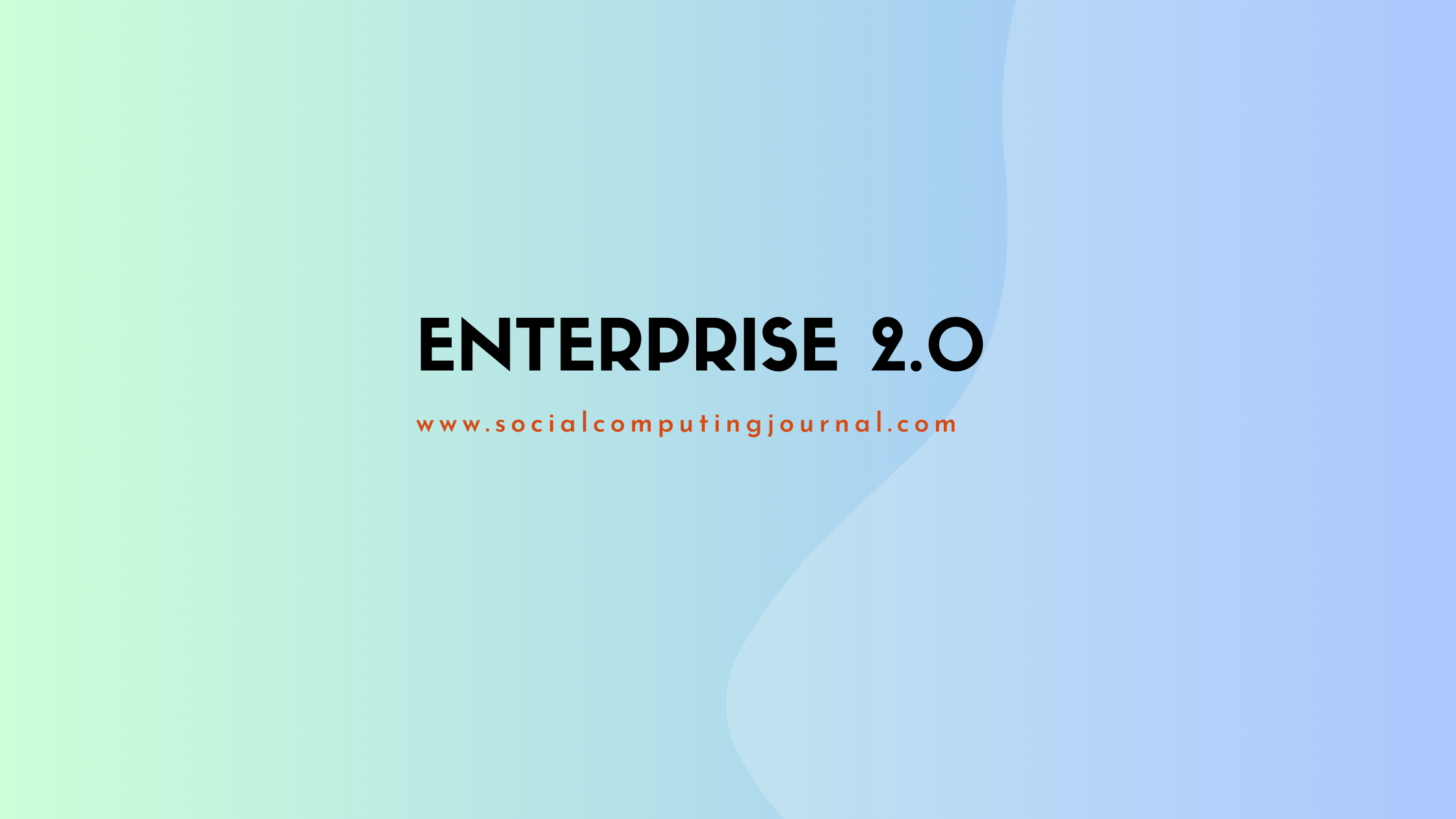Contents
What is Enterprise 2.0?
Enterprise 2.0 is the idea of integrating Web 2.0 technology and tools into your business to support collaboration amongst your partners, suppliers, customers, and staff in creating networks of like-minded individuals and exchanging information. The term “Enterprise 2.0” was first coined by Harvard Business School professor Andrew McAfee, who recognised the possibility of applying Web 2.0 concepts—which were previously mostly employed by teenagers and college students to create social networks—to business.
Enterprise 2.0 Applications
Here are the applications of Enterprise 2.0.
- Enterprise 2.0 reverses the original concept of the Web, moving from one-way communication to multiparty conversations.
- It facilitates information sharing and knowledge management inside and outside the organization using tools such as blogs, wikis, social networking, tagging, and rating systems.
- The key to these tools is the active participation and control they offer to individuals, fostering collaboration, information sharing, and the formation of networks based on shared interests.
- While tools to enable these functions have existed for some time, their simplicity is a game-changer. Simplicity encourages use, a crucial factor in knowledge management, as people are more likely to share information when it’s easy to do so.
- The rise of Enterprise 2.0 offers new hope for knowledge management and information sharing, simplifying the complex technologies of the 1990s while preserving their core ideas.
- Enterprise 2.0 concepts are gaining credibility, with over 800 attendees at the recent Enterprise 2.0 Conference in Boston. Key industry players like IBM, Microsoft, and Cisco are actively involved.
- IBM introduced the “Web 2.0 Goes to Work” package for WebSphere Portal, while Microsoft promotes SharePoint as a collaboration environment to implement Enterprise 2.0 principles, along with other Microsoft technologies like Office.
Read More: Enterprise 2.0 Will Reinvent Corporate Silos
Enterprise 2.0 Tools
When managers examine Web 2.0 tools, they may initially wonder about their relevance to the enterprise.
Web 2.0 tools, once you look beyond personal content like photos and videos, offer significant business applications.
Several Web 2.0 technologies with direct relevance to the enterprise include:
- Blogs and wikis for two-way communication, content sharing, and collaboration.
- Social networking tools for building virtual business networks and finding connections.
- Tagging for user-generated categorization and the creation of folksonomies.
- Rating systems to assign qualitative and popularity values to content.
- Social bookmarking for sharing browser bookmarks and collaborative tracking.
- RSS (Really Simple Syndication) for pushing information to individuals through subscription models.
- Additional Enterprise 2.0 tools include:
- Searchable Web-based email with tag organization (e.g., Gmail).
- Web-based conferencing for virtual meetings and demonstrations (e.g., WebEx).
- Mash-ups, which provide programming links to online applications, allowing customization for various organizational purposes.
- Mash-ups offer a cost-effective way to create custom applications by combining APIs and technologies.
Advantages of Enterprise 2.0
Do you know about the advantages of enterprise 2.0? Here are some of the advantages it provides.
- Enterprise 2.0 simplifies systems by removing size and complexity compared to earlier systems.
- Experts like systems analysts and consultants are not required for deployment and maintenance.
- Enterprise 2.0 tools, in their current form, are cost-effective to implement.
- These tools are easy to deploy and maintain, with the option to start small and incrementally expand, often beginning with internal use.
- Minimal training is needed as the tools are user-friendly.
- Web-based deployment allows employees to access critical data, including documents, RSS feeds, bookmarks, and more, from anywhere with an internet connection.
- Enterprise 2.0 fosters two-way communication with partners, suppliers, and customers.
- This enables sharing information, ideas, and even requesting user-generated content, strengthening brand equity and facilitating collaboration.
- Starting a blog or wiki for specific product categories becomes more accessible and cost-effective, promoting communication within niche markets.
Risks of Enterprise 2.0
- Enterprise 2.0 is not risk free. Here are some risks involved with enterprise 2.0.
- Industry Uncertainty: The Enterprise 2.0 landscape is still evolving, much like the state of the internet in 1999. Numerous companies are competing in this space, making it challenging for IT professionals to evaluate the technology and vendors effectively.
- Security Concerns: Security remains a major issue with Enterprise 2.0 technology. Opening up an enterprise to share information raises questions about safeguarding infrastructure from potential threats. It’s a challenge to balance information sharing with maintaining robust security.
- Vendors Developing Solutions: Over time, vendors have started to develop enterprise-level delivery platforms that address security concerns. This evolution is similar to the trajectory of instant messaging when it moved from personal use to enterprise adoption.
- Varying Levels of Expertise: Not everyone possesses the expertise required for meaningful contributions in open collaboration environments. Opening up the conversation can result in the inclusion of content and opinions from individuals who may lack the necessary knowledge or expertise.
- Loss of Content Control: Sharing content inherently involves giving up some degree of control. Companies invest significant resources in crafting and maintaining a consistent brand message, but open conversations can disrupt the controlled message.
- Loss of IT Control: Enterprise 2.0 often operates outside traditional IT structures, leading to concerns about relinquishing control over essential IT systems. It’s a decentralized and ad hoc approach, shifting more control to users and less to the IT department.
- Vendor Solutions for Control: Some vendors are addressing control concerns by providing dashboards that allow organizations to regulate which employees can access and use specific tools, potentially alleviating IT’s worries.

